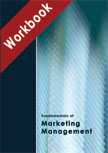BMW's Marketing Strategy in India
|
|
ICMR HOME | Case Studies Collection
Case Details:
Case Code : MKTG294
Case Length :16 Pages
Period : 2006-2011
Pub Date : 2012
Teaching Note : Not Available
Organization :BMW, Bayerische Motoren Werke AG
Industry : Automobile
Countries : Germany, India
To download BMW's Marketing Strategy in India case study
(Case Code: MKTG294) click on the button below and select the case from the list of available cases:

OR
 Price:
Price:
For delivery in electronic format: Rs. 500;
For delivery through courier (within India): Rs. 500+ Shipping & Handling Charges extra
» Marketing Case Studies
» Marketing Management Short Case Studies
» View Detailed Pricing Info
» How To Order This Case
» Business Case Studies
» Case Studies by Area
» Case Studies by Industry
» Case Studies by Company
Please note:
This case study was compiled from published sources, and is intended to be used as a basis for class discussion. It is not intended to illustrate either effective or ineffective handling of a management situation. Nor is it a primary information source.
Chat with us

Please leave your feedback

|
|




<< Previous
Background Note
|
BMW's history can be traced back to 1913, when Karl Friedrich Rapp (Rapp) established Rapp-Motorenwerke14 to manufacture aircraft engines in Munich, Germany. In 1916, while the First World War was on, the company secured a contract to manufacture aircraft engines for the Austria-Hungarian army. Rapp needed additional financing to honor this contract. To meet this need, he entered into a partnership with Camillo Castiglioni and Marx Friz in 1916. The new partnership company was named Bayerische Motoren Werke GmbH. However, by 1917 the company soon ran into difficulties because of over-expansion and the partners sold it to Austrian industrialist, Franz Josef Popp, in 1917.
|

|
After the First World War, Germany was banned from producing aircraft, so the company shifted to manufacturing railway brakes. In 1922, Bayerische Flugzeugwerke AG, a company that manufactured small aircraft, was merged with Bayerische Motoren Werke to form BMW AG.
BMW started manufacturing motorcycles in 1923. In 1928, BMW bought a car manufacturing unit in the Eisenach region of Germany. Along with the unit, the company acquired the rights to manufacture a small car called 'Dixi' which was based on the Austin Seven car15. BMW started designing and manufacturing its own cars by the early 1930s. Some of its highly successful models included the 327 Saloon and the 328 roadster.
During the Second World War, BMW once again concentrated on manufacturing aircraft engines and motorcycles for the German army. Toward the end of the war, The company was all but wiped out. Undeterred, BMW slowly rebuilt its business and in 1952, began car production again. The company tried to enter the premium segment of cars but it was not successful. Its cars failed to create an impact on the market. Faced with too many problems, the company even considered merging with rival Daimler-Benz in 1959. But the chairman at that time managed to convince the shareholders to oppose the move.
In the same year, the company launched the BMW 700, a small car with a rear mounted engine. The car's sporty exterior was its main selling point. The car was well liked and was instrumental in turning around the fortunes of the company. In 1961, a powerful compact sedan, the BMW 1500, was launched and this helped consolidate BMW's reputation further. In 1968, the company launched the 'New Six' sedans, which became highly popular. In the 1970s, the company launched several successful models. In 1971, BMW moved into its new headquarters at Munich; the building's architectural design reflected the four cylinders of a car engine.
Excerpts -
Next Page >>
|
|









